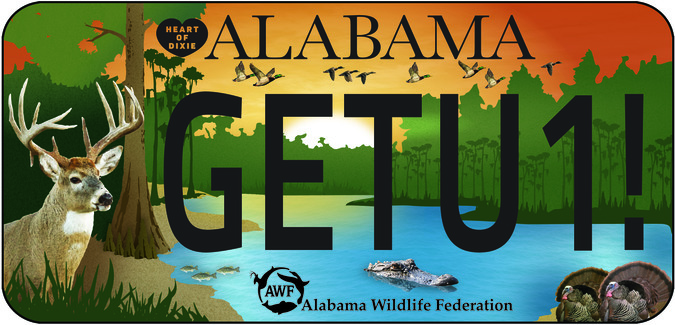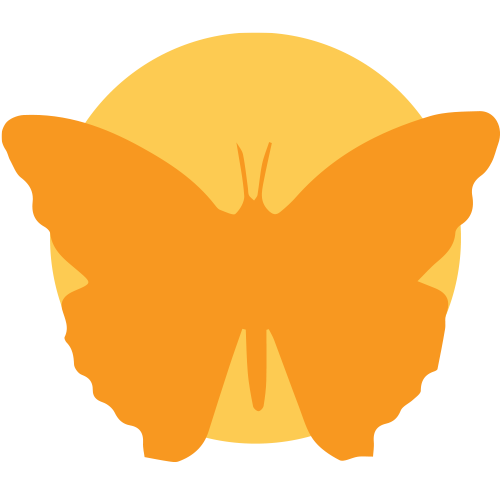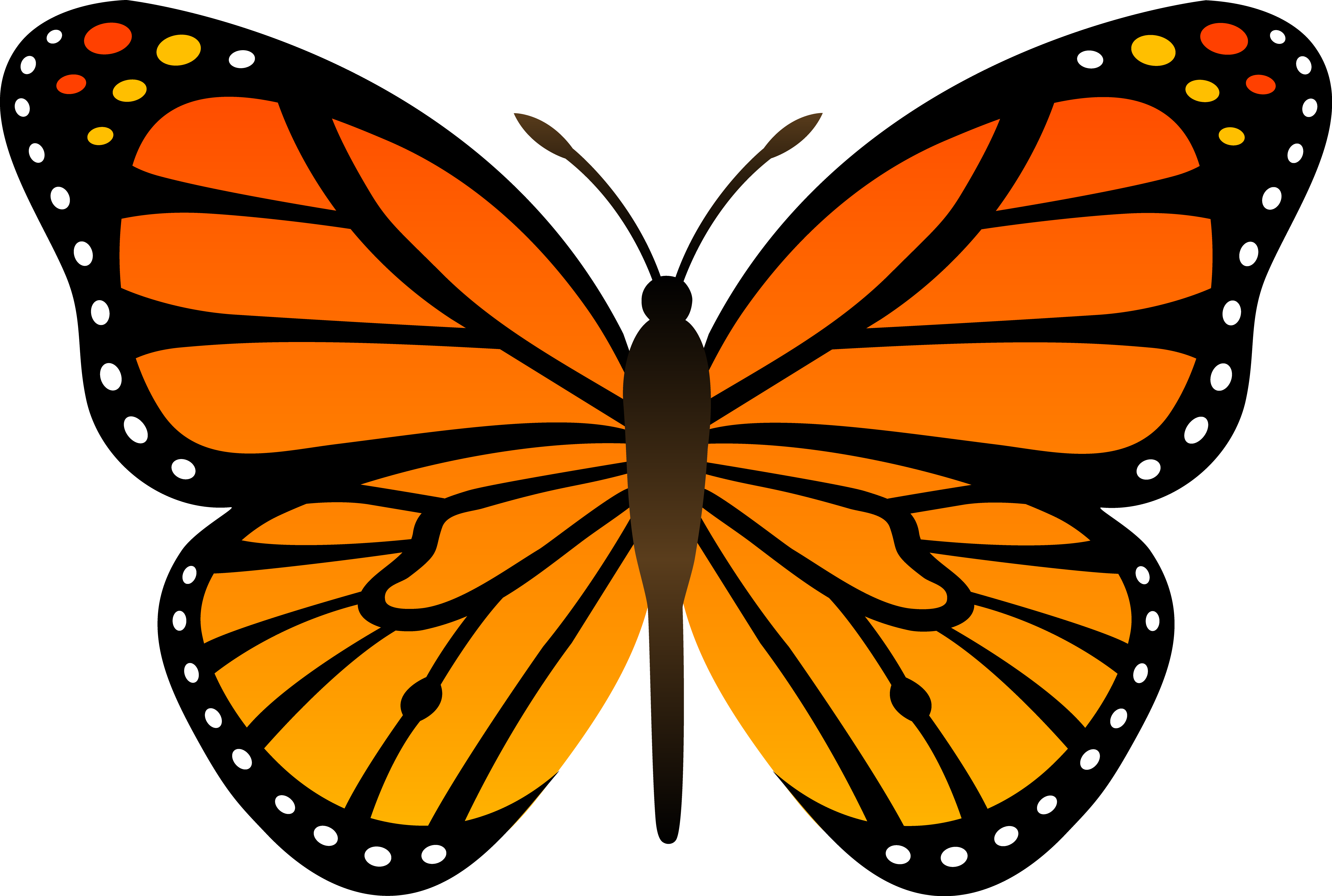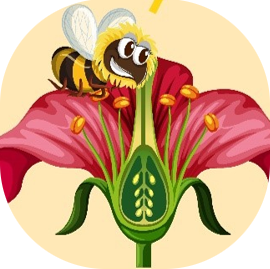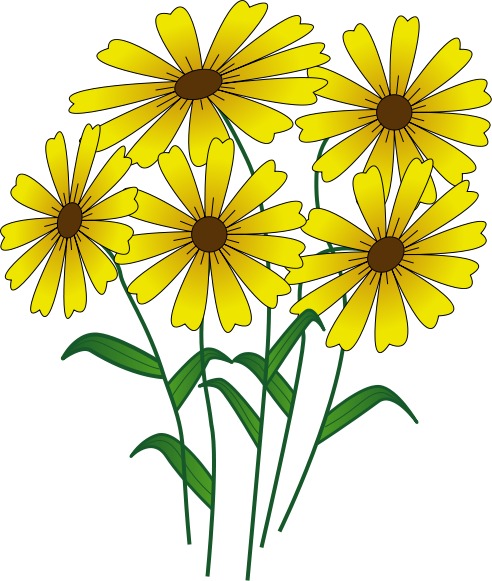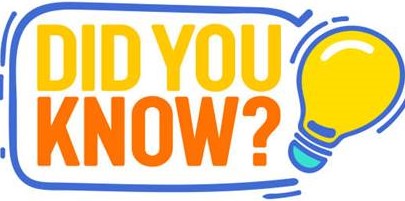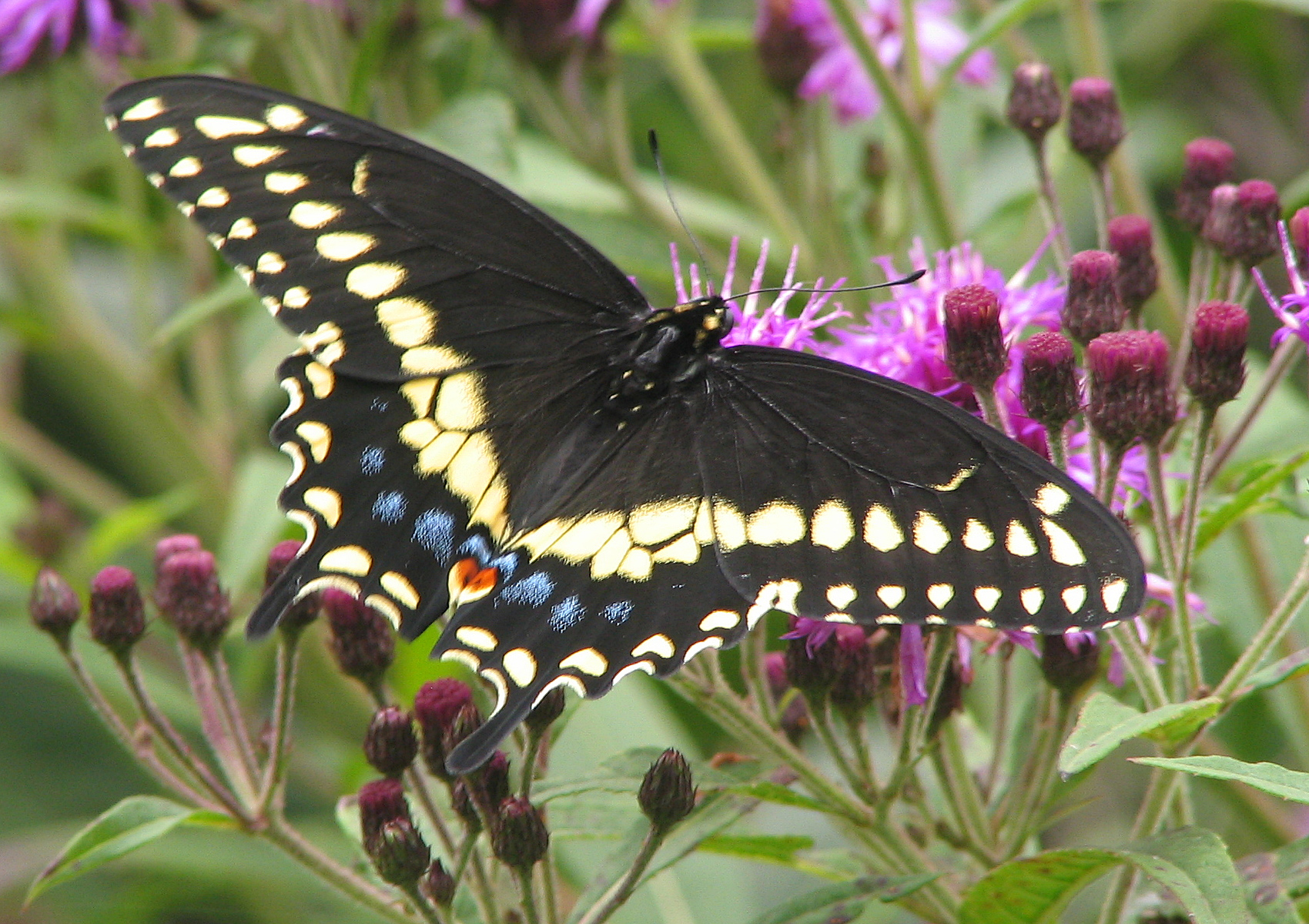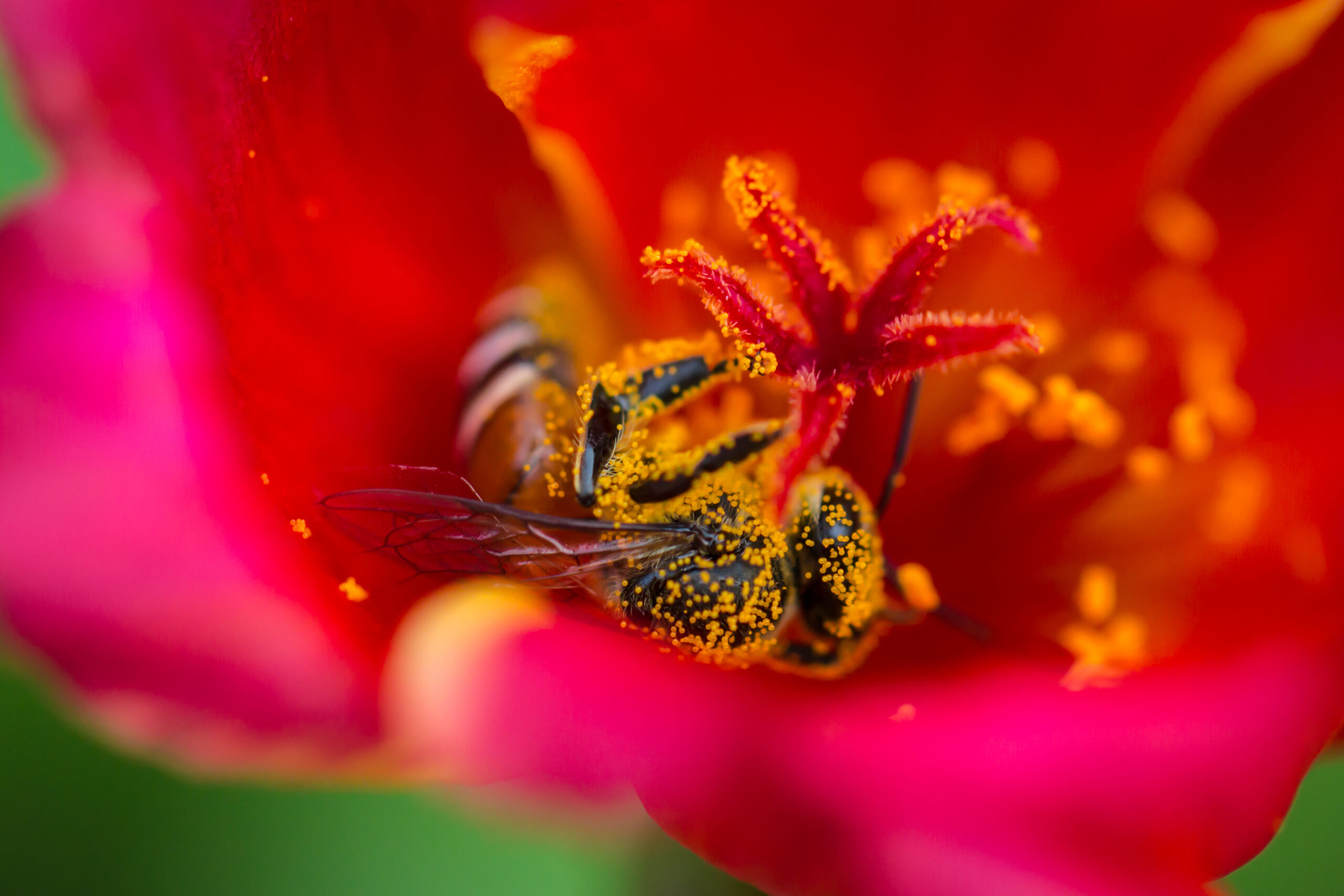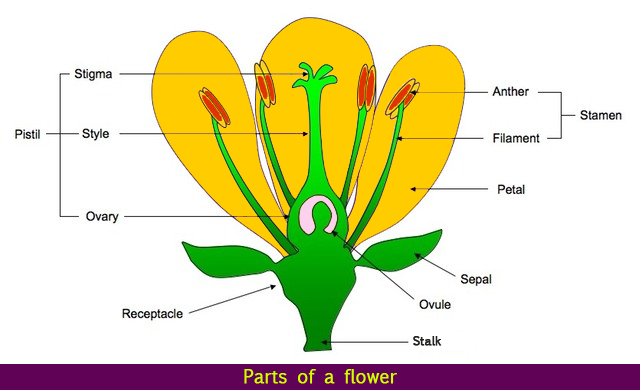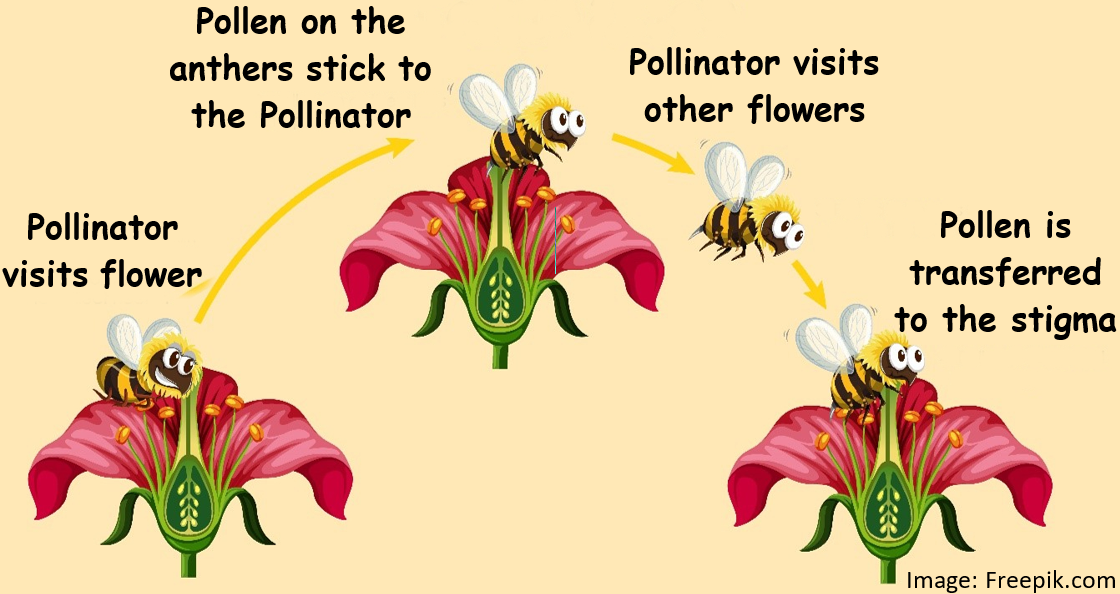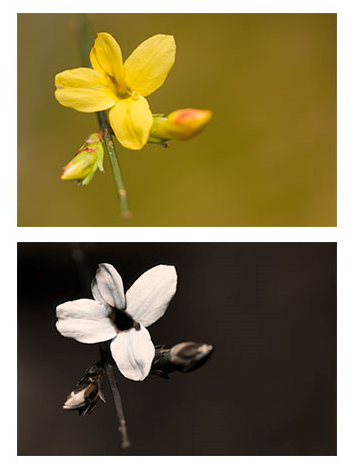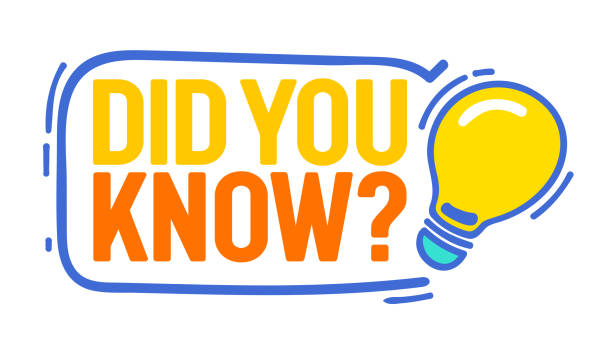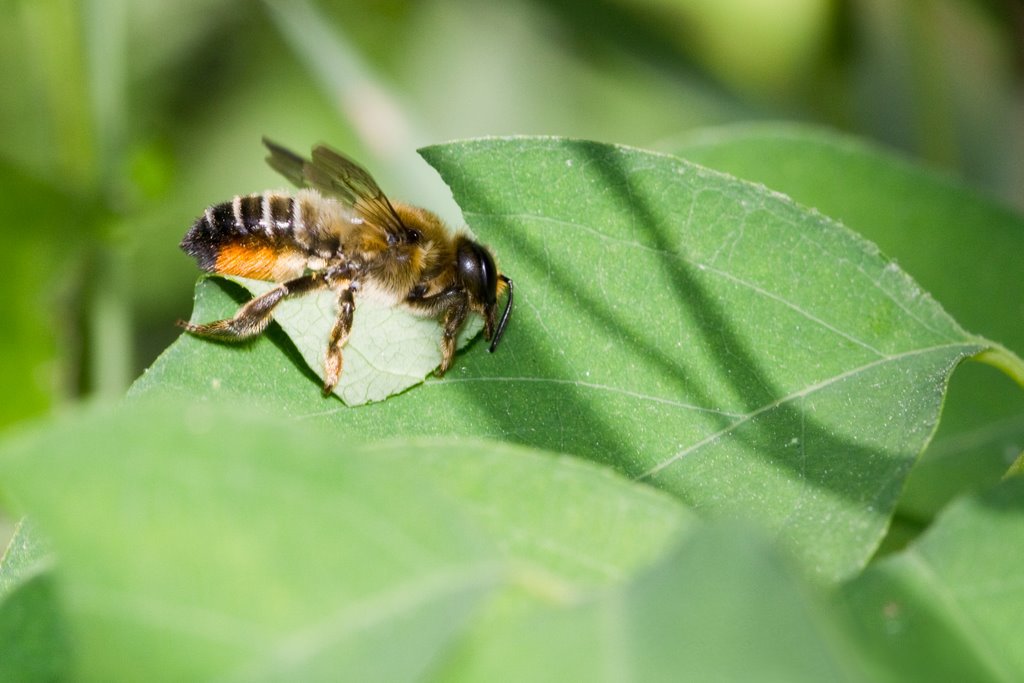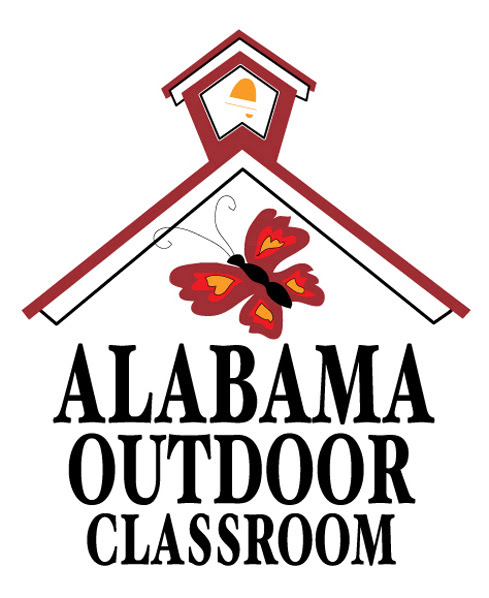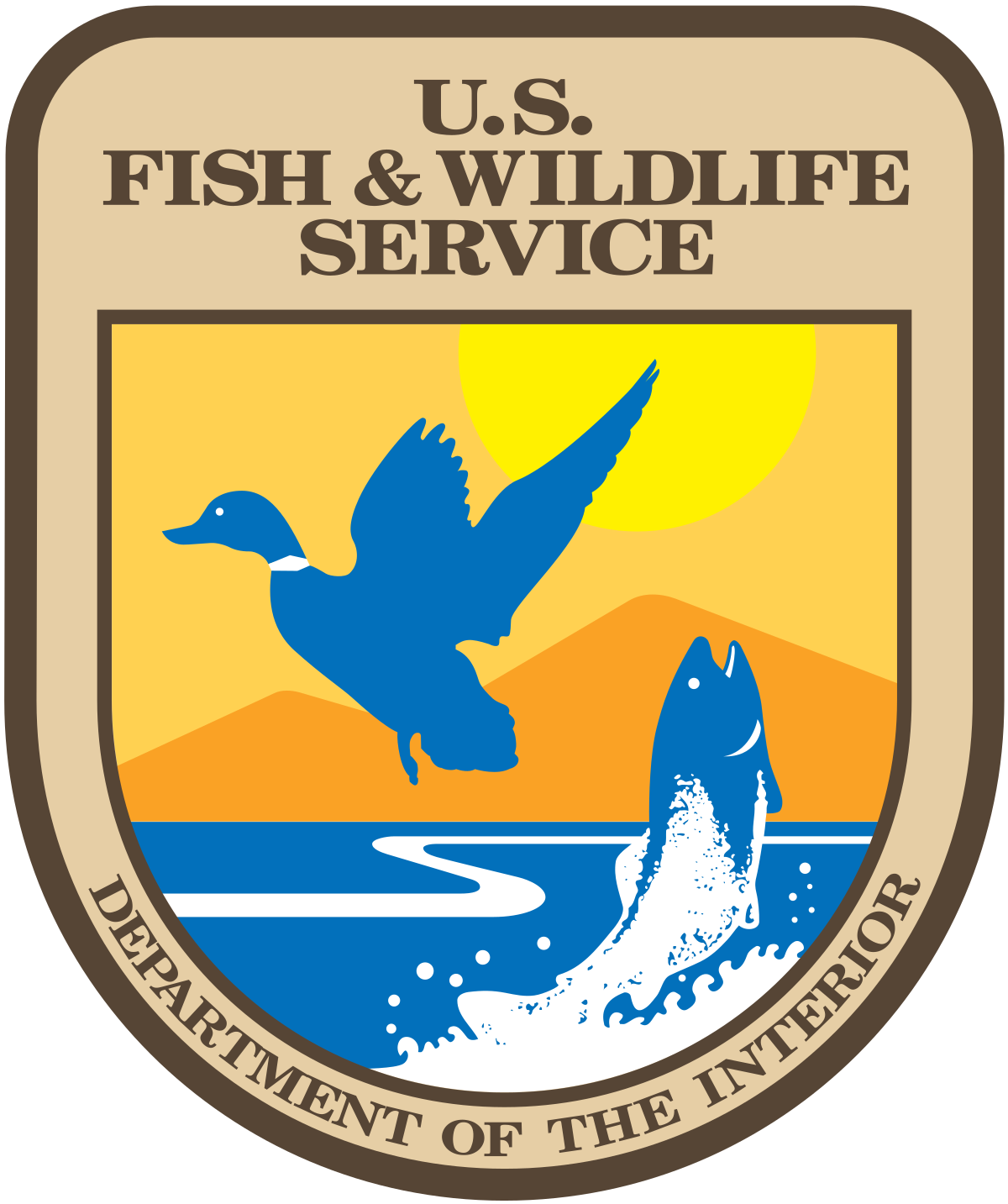
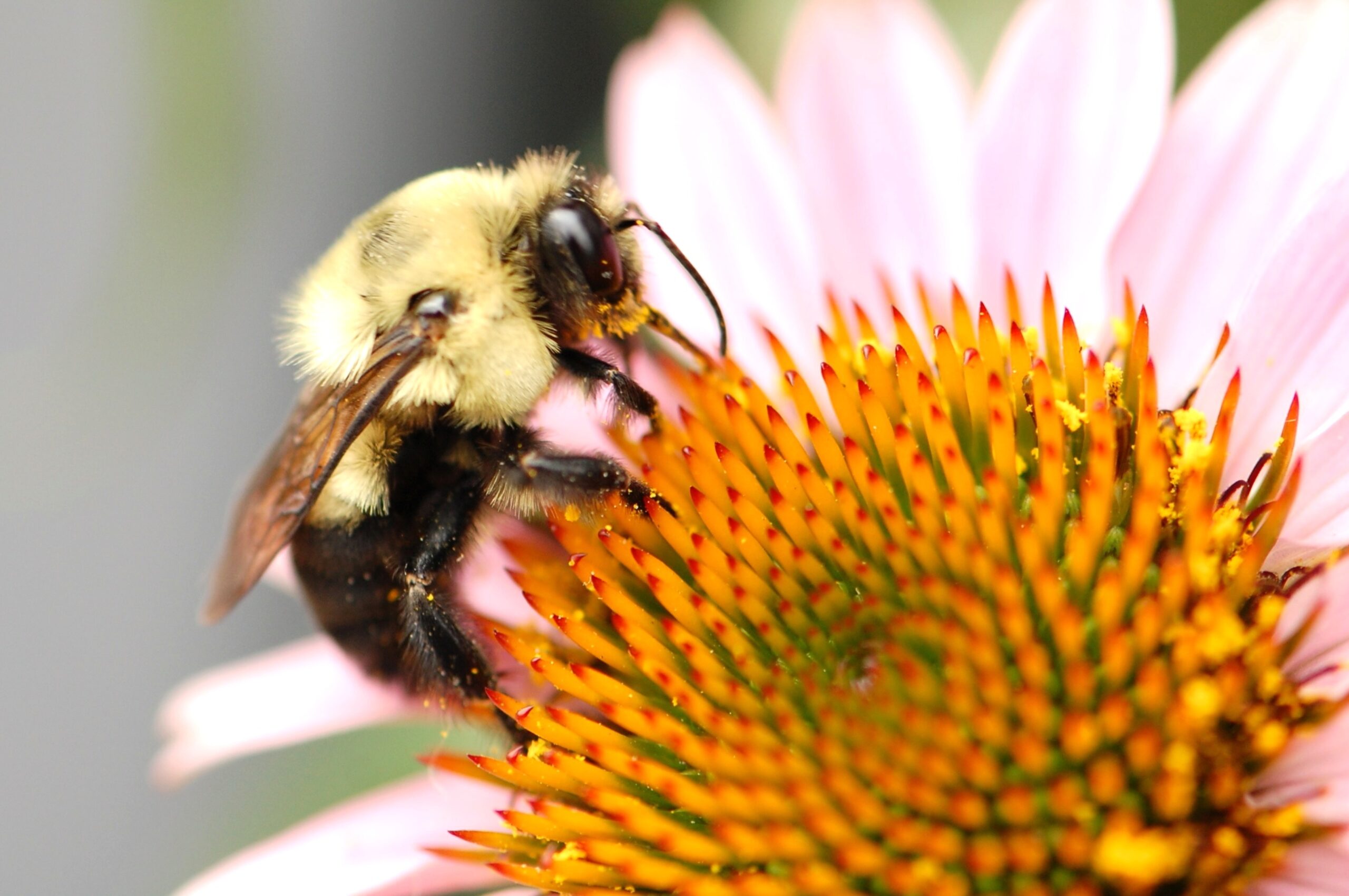 |
| Bumble Bee on Purple Coneflower Dreamstime Click pic to enlarge |
Investigate Pollinators and
Their Habitats
Your pollinator garden is home to native plants and flowers that provide nectar and pollen for native pollinator species including bees and butterflies.
| Click on the topics below to learn more! | |||
| Alabama's Pollinators | Pollination | Habitat Needs | Interesting Facts |
| Alabama's Pollinators | |
| Pollinators are animals that help carry pollen (yellow, powdery substance from male part of flower) from flower to flower. Sometimes pollen is carried by wind or water, but often Some animals visit flowers in search of food. Some extract nectar (sugary fluid produced by plants) from flowers using their tongue or proboscis (long, sucking mouthpart of insect). They may also visit the flower to find shelter, nest-building materials, or mates. |
Black Swallowtail
Wikimedia – Derek Ramsey Click the image to enlarge it |
| The animals get the resources they need from the plant and the plant gets help with pollination (the transfer of pollen from plant to plant) and seed dispersal (the movement of seeds away from the parent plant). |
Bee with Pollen
Dreamstime Click the image to enlarge it |
| Common pollinators in Alabama include a number of species of ants, bees, beetles, butterflies, hummingbirds, moths, and wasps. Some bat species in other parts of the country and world are pollinators, but all 16 of Alabama’s bat species are insectivorous (feed only on insects). | |
| Click on the names of the animals below to read more about the species you will commonly find around your pollinator garden. |
|
|
|
Butterflies – like the Monarch or Black Swallowtail |
|
|
Bees – like the Eastern bumble bee |
|
|
Ants – like Little black ants |
| Pollination Process | |
| Pollination is the act of transferring pollen grains from the male anther part of a plant's flower to the female stigma part of the plant's flower so that the flower can become a seed and the plant can create offspring for the next generation. | |
| Pollination occurs when pollen leaves the anther (part of the stamen) and lands on the stigma (part of the pistil).
Self-pollination occurs when the anther and stigma are on the same flower or plant. Cross-pollination occurs when the pollen comes from a different plant's anther. This transfer of pollen is required for plants to produce fruits, seeds, and more plants. |
Parts of a Flower
Wikimedia – Anjubaba Click the image to enlarge it |
| HOW IT WORKS: |
Pollination Cycle
Freepik.com Click the image to enlarge it |
|
Nectar Guides (on bottom photo) Click here to view a presentation about pollinator vision and how they perceive color
|
|
|
| Habitat Needs |
|
Food:
Flowers in your garden provide nectar (sugary fluid produced by plants) and pollen (yellow, powdery substance from male part of flower). Fallen, rotting fruit can also provide food for pollinators. The plants in your garden are perennial (recur year after year) plants. These are generally richer in nectar and provide a more dependable food source than annual (occur once per year) plants. A variety of flower shapes, heights, smells, and colors provide nectar and pollen for many different kinds of pollinators. Click on the flowers to see the plant species commonly found in outdoor classroom pollinator gardens! |
|
Water:
Many pollinators get their water needs met by drinking nectar and visiting shallow puddles. Your garden may have a saucer or other shallow dish filled with water and small rocks – this allows pollinators to safely sip water without drowning. |
| Shelter:
Vegetation, leaf litter, and dead plants will provide shelter from inclement weather as well as predators. |
| Places to Raise Young:
Many species of pollinators will lay their eggs on the plants or in the soil in your garden. |
|
Native pollinators have co-evolved (influence each other in the process of development or evolution) with these native plants to most efficiently collect pollen and nectar, making their success more likely than if they were to pollinate non-native species.
These plants are an important base in the food chain, as they draw in native pollinator species which are in turn food for native birds, mammals, reptiles, and amphibians. For these reasons, native plants increase the biodiversity (the variety of life found in a place) of your outdoor classroom.
CLICK HERE to read more about why you should plant native species!
|
| Interesting Facts | ||
| Pollinators are extremely important because they enable plants to provide food and cover for wildlife, prevent erosion, and keep air and waterways clean. They are also vital for many of the foods we eat. This is why it is so important that we create habitat for pollinators because many populations of pollinators, including bees, flies, butterflies, and beetles, are in decline. | ||
| #1: | It is estimated that animal pollinators are needed for the reproduction of 90% of flowering plants and one-third of human food crops. This means that you can thank a pollinator for every one out of every three bites of food you take! | 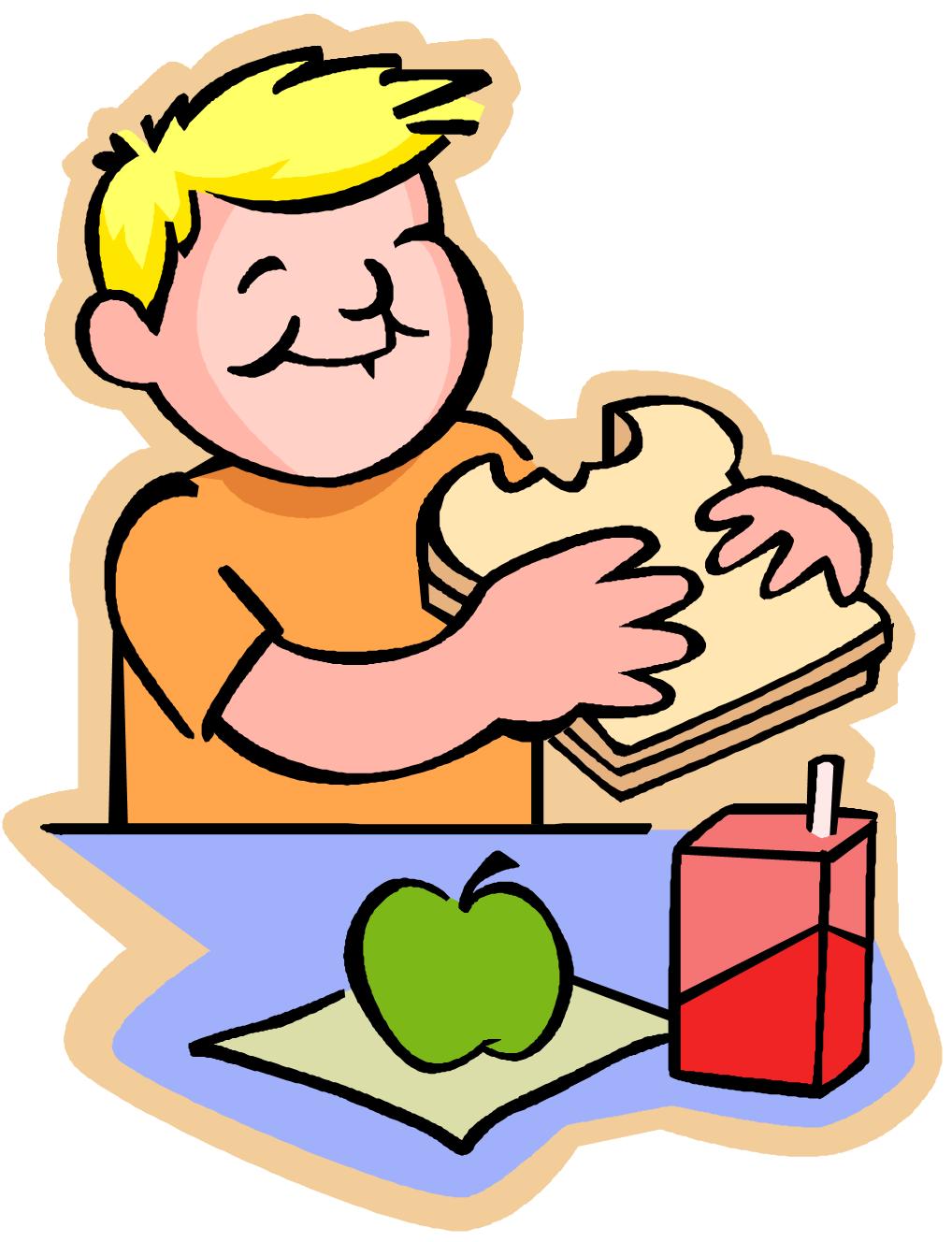
|
| #2:
|
Pollinators play a significant role in the production of over 150 food crops in the U.S.—among them apples, almonds, blueberries, cranberries, kiwis, melons, pears, plums, and squash. | |
| #3: | In the U.S., pollination produces nearly $20 billion worth of products annually. |
Leaf Cutter Bee
|
| #4: | There are roughly 200,000 animal species around the world that perform as pollinators. Less than 1% of these are vertebrates (birds, bats, and other small mammals). The rest are invertebrates, including flies, beetles, butterflies, moths, wasps, and bees. | |
| #5: | One native leaf cutter bee can do the pollination job of 20 non-native bees. | |

